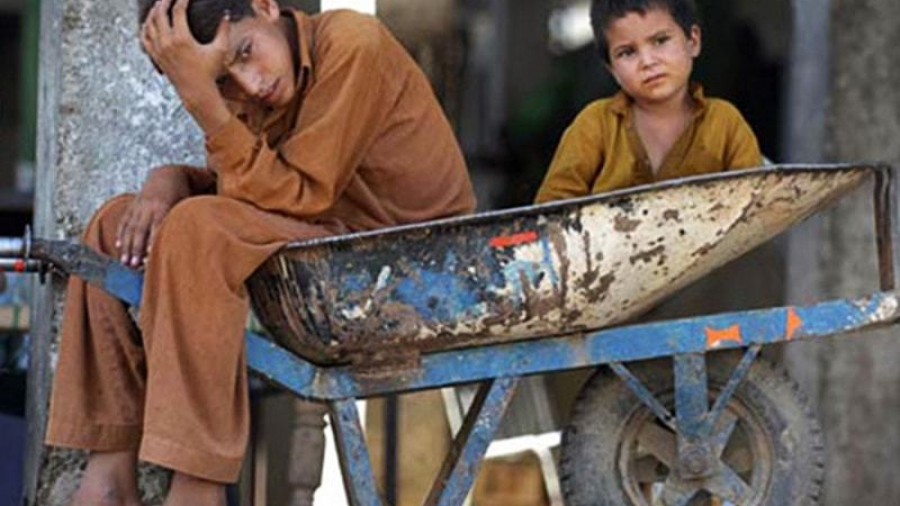Child labour has been a big socio-economic issue in the developing world. Pakistan is no exception in this regard. In fact, during the last decade, it was revealed that the ratio of child labour had increased in Pakistan compared to other countries of the region. The situation of child labour in KP kept on worsening during the 1990s and 2000s due to the growing population, influx of Afghan refugees, and law and order situation in the KPK after 2001. In 2012, it was estimated that almost 1.56 million children of age below 17 years were part of labour force in the province out of a total of 2.6 million out-of-school children in the country. This situation was worrisome, demanding some quick policy decisions and actions in this regard.
The country’s effort to fight this social menace hit a roadblock in 2009 when 18 amendments were approved. Under the 18th amendment, he said, child rights fall under the domain of provinces.
KP, Baluchistan, and Gilgit Baltistan had the very limited institutional infrastructure and legal framework to take required steps at official levels. The situation remained grime even though Pakistan had ratified UN Convention on the Rights of the Child 1989, as well as the ILO Conventions on Minimum Age for Employment, No. 138 of 1973), the Worst Forms of Child Labour, No. 182 of1999 and integrated elimination of child labour into National Labour Protection Framework (NLPF). All these laws and conventions demanded that the state of Pakistan would take some drastic measures to eliminate child labour from the country. But under the changed constitutional framework, now provinces were responsible to take actions at the provincial level and the combined efforts of all provinces were to consider Pakistan’s overall action in the elimination of child labour.
Apart from these international laws and conventions, Pakistan is also a signatory to Sustainable Development Goals and SDG 8.7 that requires member states of the UN to “Take immediate and effective measures to eradicate modern slavery and human trafficking and secure the prohibition and elimination of the worst forms of child labour, including recruitment and use of child soldiers by 2025”.
Pakistan’s initial steps towards the eradication of child labour manifested in the form of “The Employment of Children Act” in 1991. This law prohibits the employment of children in any occupation, establishment, or hazardous processes, except for the processes, carried out alongside family as a business, or in any Government recognized (training) school. 18th amendment effectively put the enactment of this law ineffective in Baluchistan and KP.
A report published by International Labour Organization (ILO) prepared after conducting Pakistan Labour Force Survey 2017-18 revealed that around 14% of children aged 10 to 17 years were part of the child labour force. Pakistan Bureau of Statistics (PBS) is conducting a province-wide child labour survey to give current data. This Survey will generate evidence on child labour at the provincial level that can guide and support the improvement of legal and policy frameworks.
Serious efforts towards the elimination of child labour in KP began in 2015 with the introduction of the Prohibition of Employment of Children Act (2015). The growing number of out-of-school children was still a problem from where businesses in the province were able to recruit underage laborers. To overcome this challenge, the “Free Compulsory Primary and Secondary Education Act 2017” was introduced, making education free and compulsory for children aged 5 to 16 years. To further partner various provincial departments in the province in this drive, KP adopted Child Labour Policy in 2018 and accompanying laws including the Prohibition of Employment of Children Act 2015 that restricts employment of children (under the age of 14 years) at brick kilns.
Many international projects are being implemented across the province to gather data about current trends in child labour. For example, ARC Project is designed to help eliminate child labour, particularly its worst forms, in Asia and contributes to the achievement of Sustainable Development Goal Target 8.7. The project aims to reduce vulnerability to child labour and enhance the protection of children from exploitation by achieving the following three outcomes/objectives:
- Building a credible knowledge base on the causes and drivers of child labour and effective interventions to address them.
- Aligning legislation and policies with international conventions on child labour, forced labour, and trafficking in persons and enforcing and implementing.
- Developing and applying a holistic approach to eradicating child labour, particularly its worst forms, in selected regions of each country.
The provincial government is also in process of completing the Child Labour Survey with the help of ILO. It began in 2019 across the country. Provinces are making progress at their own pace. The below graphic depicts the current progress (as per PBS).

Gilgit-Baltistan has completed all the phases of this comprehensive survey. KP has made more progress than Baluchistan, Sindh, ICT, and AJK but lagging behind Punjab. With commitment from the provincial government, KP will hopefully complete this survey in 2022 and the existing policy and laws related to child labour will be amended accordingly. Elimination of this menace is critical for young generations, prosperous KP, and a strong Pakistan.


